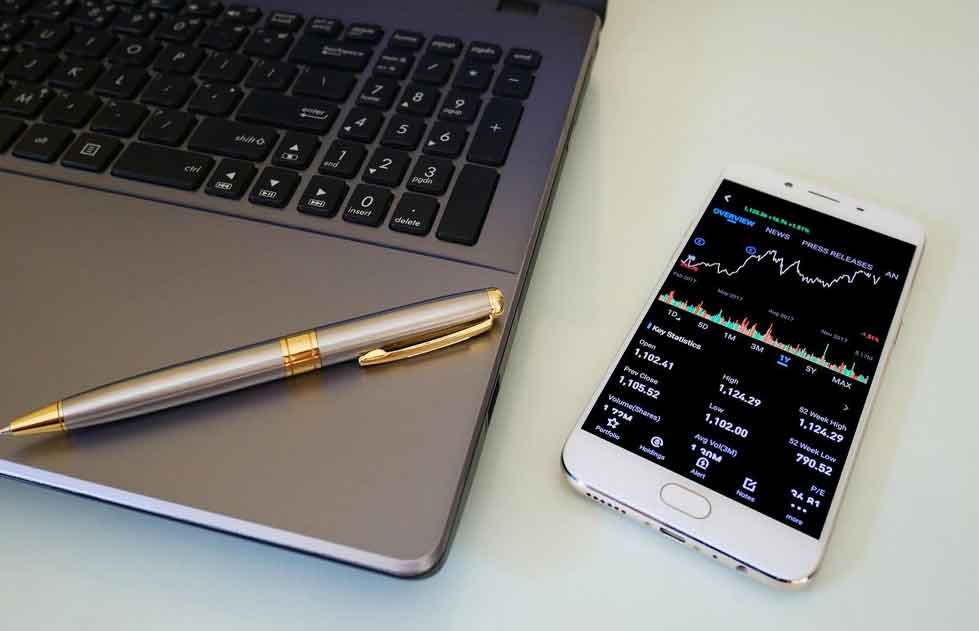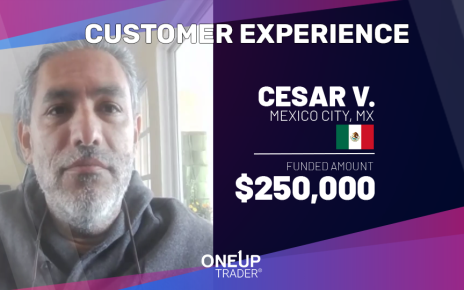Forex trading is becoming hugely popular as millions of people join this market looking to make some serious money. Although it may seem like getting into the world of currency trading requires a good understanding of how the economy works, it’s not that complex.
So, if you’re looking to become a part of the currency futures market, you should first go over the basics and make sure that you understand how everything works.
Stay with us, and we’ll give you all of the information you need to start making well-informed decisions to start trading foreign currencies successfully.
So, what are currency futures?
Currency futures are also known as forex futures or foreign exchange futures. They are viewed as an exchange-traded futures contract where you foresee the price of one currency needed to purchase or sell another currency in the near future.
All available currencies are treated as a commodity. In other words, you make predictions on how one currency compares to another and how their exchange rates perform. If your futures price estimations are precise, you can make a lot of money.
This currency futures contract is legal, and all people that signed the futures contract must complete the transaction on the expiration date. They have to deliver the specific currency they chose and pay their agreed price when signing the contract.
Currency futures contracts are often used to hedge commercial trades and reduce currency risks, besides giving insight into the futures prices of currencies.
Currency futures basics
The act of betting on currency futures was first started at the Chicago Mercantile Exchange in 1972. The FX market is the biggest in the world, and thousands of people and corporations flock there to make new currency futures contracts daily.
All traders must have the capital they need to cover the margin and potential losses that may occur as a currency changes the price. However, trades can also be closed earlier than the delivery date by buying or selling more currencies.

They simply close out positions and move to new trades. The only contracts with different rules involve the Mexican Peso and South African Rand, as they accept currency future forecasts only four times per year.
Let’s say that a trader buys Euro FX futures using the U.S. dollar. Currently, the one Euro to U.S. dollar currency foreign exchange rate is 1.20, and by signing an FX futures contract, this trader agrees to pay 125,000 euros, as that’s how much each Euro FX future is worth.
When the trade is made, you have to pay in U.S. dollars sent to the seller, while you get euros you bought in return. In other words, you set the final price estimation and the future date when the transaction is supposed to end. This future date is set in stone, as they say.
Most active members of the futures market are called speculators, and they simply close all positions before the last expiry date. Trading doesn’t involve any hard cash or physical money delivery; they make or lose money based on the price changes of the futures contracts.

Depending on if they won or lost money, their currency futures trading account is updated. The information provided holds all details about every transaction, such as time of the trade, name, last price, and so on.
If they invested into a 125,000 contract and paid 1,20 US dollars for one euro, if the currency changes to 1.19 or 1.21, they either lost or gained $1,250 on a single contract.
Currency Futures Contracts
When trading cross-currency futures, there are many different types of contracts available. The most popular currency contract types are in futures of EUR and USD, but you can also trade in so-called E-Micro Forex Futures contracts that allow foreign exchange in 1/10th size of the standard currency future contracts.
Other options include currency pairs where clients buy or sell multiple currencies at the same time.
It’s also important to know that the number of contracts depends on liquidity. Since EUR and dollar trades are the most popular, there are well over 400,000 contracts daily, while smaller, emerging markets such as BRL to USD have only a few contracts every trading day.
Currency Futures Exchanges
Forex futures contracts are traded on regulated exchanges with clearly stated prices. That means that all markets offer the same prices and conditions.
For example, the CME Group currently offers 49 currency futures contracts with total liquidity of over $100 billion every day. It’s by far the largest marketplace for currency futures in the world. Other popular exchanges include the Tokyo Financial Exchange, the Brazilian Mercantile, NYSE Euronext, and Futures Exchange.

Forex Spot Rate VS. Futures Rate
Spot Forex and Forex futures are the most popular markets for foreign currency exchange. However, there are some significant differences between their systems, and here’s a quick overview of their essential features.
- The Forex market is the most significant spot market in the world. Currency futures volumes are much smaller compared to spot Forex, But still many contracts have excellent liquidity.
- Currency futures offer exchange rates regulated like all other futures markets. The prices are all based on the same rates and quotes, allowing more transparent deals. On the other hand, spot Forex isn’t regulated as much, and since there is no central marketplace, traders usually close deals over the counter.
- Spot Forex broker dealers allow trading with a lot of leverage, allowing some traders to score massive amounts of money, while others have huge losses. Alternatively. currency futures deal in smaller leverages, making contract trading less risky. Besides you can get volume data from the exchange for better decision making.
- The taxes for dealing with foreign currency are not the same for currency futures and spot forex. The percentage dealers have to pay in taxes depends on each specific situation.
- When it comes to fees and commissions, they are also different. For every deal in currency futures, you have to pay the broker and a few other regular exchange fees, while spot Forex traders are also subject to exchange rate spreads, and sometimes commissions that allow broker-dealers to make a profit.
Typical account requirements
All currency futures are traded through an exchange, and most traders open accounts with brokers that share their insights. They advise traders when to buy or sell currency futures contracts.
Most traders use a margin account for EUR/USD exchanges. Otherwise, they would have to invest a lot of cash to be able to trade. A margin account allows clients to use the broker’s money to buy and sell, and that money is usually a multiplied version of the actual cash value the account has in total. This is called “leverage”.

The value of the trade you can make, that is, how much you can leverage, depends on the money deposited in the margin account. The brokers set up the requirements for opening a margin account, but most of them allow only a small margin for trading currency futures, especially compared to FX spot accounts.
Depending on the country and the regulatory body that the broker-dealer is registered, they offer massive leverage levels up to 400:1. Such massive margin rates allow traders to use their forex accounts to make a lot of profit, but at a huge risk.
The risk is enormous due to high leverage levels, but the rewards are also massive if the trade deal goes as planned. You can create an account for free at any time.
In addition, for those who don’t have enough capital to invest, there are funded trading accounts that provide capital to profitable traders such as OntUp Trader.
Investors have to follow the platform’s rules and prove risk management skills to get approved. After that, the platform connects them with trading partners that provide working capital for a share of profits.

How to trade currency futures
Trading currency futures requires all future contracts to present all specifications such as the minimum price increment, the contract’s size, and the tick value. These specifications are vital for determining the correct position sizing, account requirements, and potential profits or losses caused by price movements.
Here’s an example of how things would work in practice. When working with the euro against dollar, the minimum price increment may be 0.0001, with a corresponding tick value of $12.50. That means that every time the price moves for at least .0001, the total value of the contract would change by 12.50 USD, depending on the direction in which the price has moved to.
So, if the starting trade was at 1.1968 and moved to 1.1969, the .0001 movement would provide a 12.50 US dollar increase in value. If the price keeps moving to 1.1979 in the long run, the trader will make a total of 125 dollars.
On the other hand, if the price moves 0.0001 in the other direction, for example, the trader will lose 12.50 USD for every 0.0001 negative movements. Keep in mind that Euro FX futures have a minimum contract unit of 125,000 euros, so any small change of price by a few ticks can lead to high positive but also huge negative returns.
Conclusion: Should I try currency futures?
Compared with spot forex, trading currency futures is a much better option, especially for beginners, as it offers some undeniable advantages. It’s an example of a regulated exchange and it has an exchange rate with no hidden fees and much lower risks.
Forex trading is followed by many risks, while currency futures provide up-front pricing allowing traders to make better predictions. Next, since currency futures are centralized, the rules are the same for everyone involved.
Traders with experience can also use advanced market data to make informed decisions and get the most out of every currency contract. Moreover, following the latest news can also help make better-based decisions.
Futures markets always provide opportunities to profit from, but it also entails risks. To end, if you’re still interested in monetizing on the currency exchange rates, start by learning everything you should know about currency futures markets and open a demo account to start practice.






